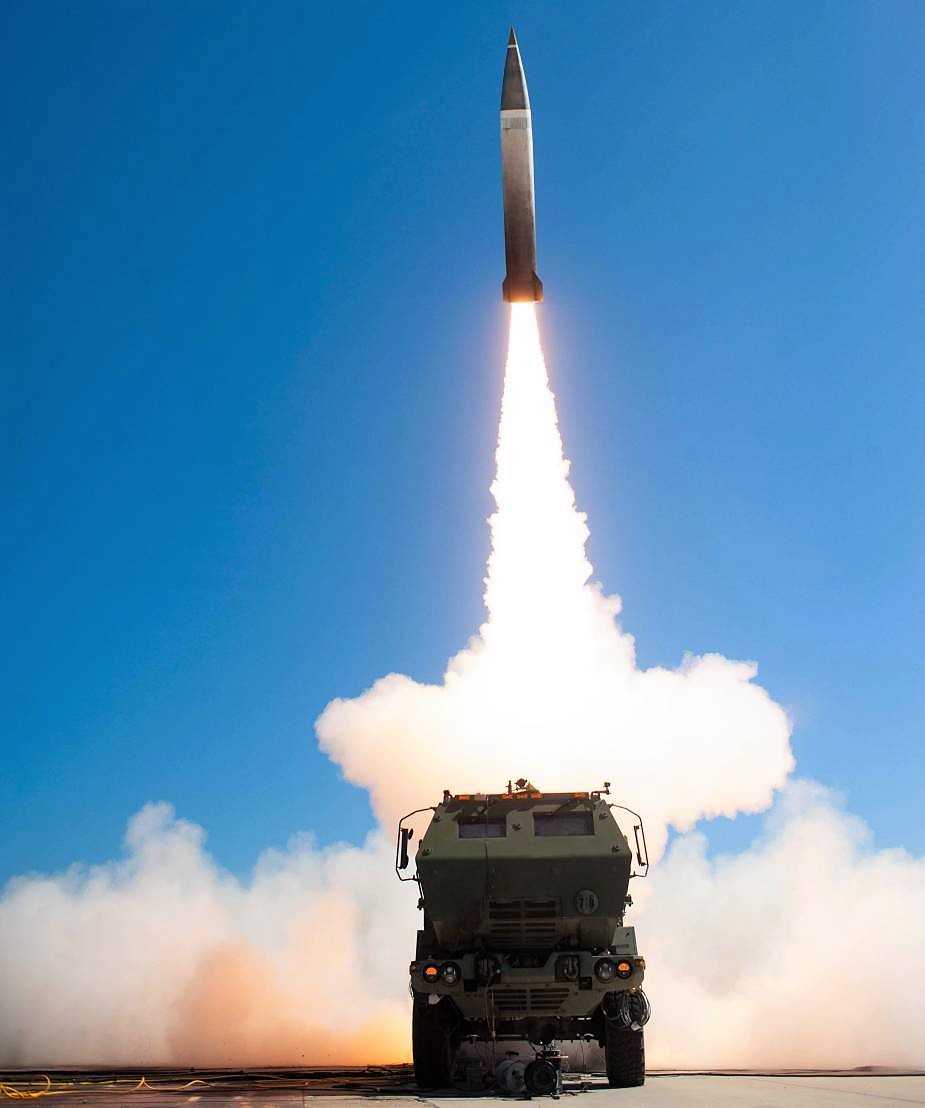US Army programs promote strength and agility of long range artillery precision fires
The U.S. Army understands that preparing for fast-paced, multi-domain conflict requires developing breakthrough warfighting systems and technologies, including in the critical area of Long-Range Precision Fires. These large-caliber, heavy-hitting fires — which include missiles, cannons and other artillery — are designed to pierce enemy lines and destroy key targets from a distance. However, like many other signature Army systems, they must evolve along with the rapidly changing nature of warfare to remain optimally effective. Maureena Thompson, Army Futures Command, reports on U.S. Army's website.
Follow Army Recognition on Google News at this link

The Autonomous Multi-Domain Launcher firing at Fort Sill, Oklahoma, in June 2021. (Picture source: U.S. Army/Ygal Kaufman, Army Futures Command)
“Improving the strength and agility of the Army’s field artillery systems and munitions will allow our Soldiers to deliver more precise and punishing effects on future battlefields,” said Maj. Gen. John Rafferty, Director of the Army Futures Command Long Range Precision Fires Cross-Functional Team. Rafferty’s team, based out of Fort Sill, Oklahoma, is responsible for navigating how to best advance Long Range Precision Fires for a new era of warfare; the program to do so is currently the Army’s number-one tactical modernization priority.
By working closely with the U.S. Army Combat Capabilities Development Command and forward-leaning partners from industry and academia, the Cross-Functional Team is creating a portfolio of prototype systems that pushes the envelope on what is possible. Included in the portfolio’s efforts are the Precision Strike Missile, the Autonomous Multi-Domain Launcher and the Extended Range Cannon Artillery.

A Precision Strike Missile test-fires at Vandenberg Space Force Base. (Picture source: U.S. Space Force photo by Anthony Mendez, 30th SCP Mobile Optics)
The Precision Strike Missile is a next-generation weapon designed for defeating threats to air defense, missile launchers, command and control centers, assembly/staging areas and high-payoff targets at all possible depths of the multi-domain battlefield. A flight test conducted at Vandenberg Space Force Base, California, in October validated the missile’s ability to achieve a range beyond 499 kilometers — considerably farther than the 300-kilometer range of the current Army Tactical Missile System. Through a contract with Lockheed Martin, the Army plans to roll out the first operational Precision Strike Missiles in 2023.
The Autonomous Multi-Domain Launcher is a mobile C-130-transportable launcher capable of autonomous and leader-follower navigation, as well as remote fire control operations. The ability to deploy, maneuver and fire the launcher remotely will be a considerable asset to soldiers and commanders, particularly when operating in environments marked by anti-access and area denial.

An Extended Range Cannon Artillery prototype firing at Yuma Proving Ground, Arizona, in November 2021.(Picture source: U.S. Army)
The Extended Range Cannon Artillery is a self-propelled artillery system that offers greater lethality, precision and survivability. The new armament, which consists of a cannon, mount, breech, recoil system and loader assist in a modified cab, leverages new technology to improve lethality, mobility, survivability, reliability and maintainability. The Army is on schedule to conduct a yearlong operational assessment of the system at Fort Bliss, Texas, beginning in late Fiscal Year 2023, using 18 Extended Range Cannon Artillery prototypes. Once complete, the Extended Range Cannon Artillery will enable the Army to counter long-range fire threats, shape close and deep maneuver areas and achieve tactical overmatch.
In addition, the Cross-Functional Team recently participated in a cloud pilot that demonstrated the team’s ability to quickly deliver Advanced Field Artillery Tactical Data System software to the Army's XVIII Airborne Corps at Fort Bragg, North Carolina. The pilot helped identify strategies and tools the Army can use – such as innovative microservices and open application programming interfaces – to further modern best practices in technology and a smart cloud approach, including at the tactical edge. Cloud computing innovations such as these can enhance systems interoperability, improve the efficiency of data transfer and increase the speed of decision on whether to employ Long Range Fires in large-scale combat operations.
Insights gained through work coordinated by the Cross-Functional Team inform capability requirements and the acquisition community’s programming of resources, expediting the transition of technology from prototype to fully-fledged product.
The team’s endeavors also extend beyond new technology testing to include doctrine, organization, training, materiel, leadership and education, personnel and facilities considerations, ensuring the synchronized development of all components relevant to future capabilities. This cohesive approach is helping the Army develop and implement improvements that will have an outsized influence on future warfighting outcomes. “In complex and high-tech operational environments, reaching and neutralizing threats quickly and accurately will be of utmost importance,” Rafferty said.


























